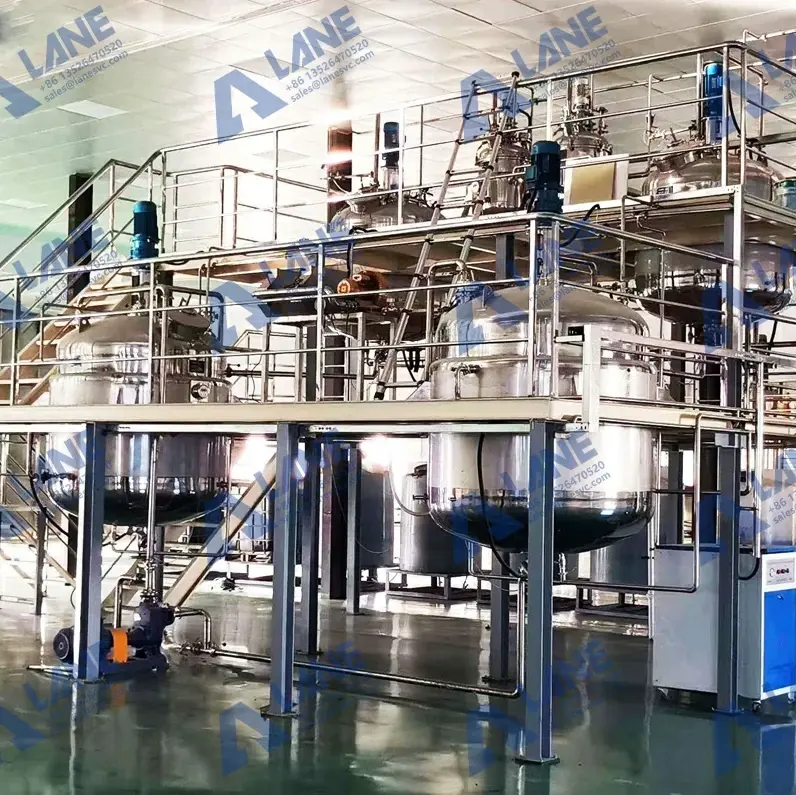Molasses Liquid Fertilizer Equipment for Sustainable Farming Solutions
- Nancy Ju
- Sep 13
- 4 min read
Updated: Sep 16
Molasses, a by-product of sugar production, is often underutilized or discarded. Yet, it contains sugars, minerals, and trace elements that can be transformed into valuable agricultural inputs. With the growing emphasis on organic and sustainable farming, molasses liquid fertilizer equipment has gained attention as a practical solution to convert this by-product into high-value fertilizers.

By processing molasses into liquid fertilizer, farmers can boost soil fertility, support microbial activity, and provide crops with an easily absorbable source of nutrients. Investing in molasses liquid fertilizer equipment not only helps in reducing industrial waste but also creates new revenue streams for sugar industries and agribusinesses.
Why Molasses for Liquid Fertilizer?
Rich Nutritional Profile
Molasses contains potassium, calcium, magnesium, and natural sugars, all beneficial for plant growth.
Microbial Support
The sugars in molasses serve as a food source for beneficial microbes, promoting soil health and nutrient cycling.
Sustainable Waste Recycling
Instead of being discarded or used inefficiently, molasses becomes a raw material for organic fertilizer production.
Enhanced Fertigation
As a liquid, molasses-based fertilizers are compatible with drip irrigation and foliar spraying systems.
Organic Farming Compliance
Fertilizers produced using molasses liquid fertilizer equipment often meet organic certification standards.
Workflow of Molasses Liquid Fertilizer Equipment
A modern molasses liquid fertilizer equipment setup follows a structured production process, supported by specialized machinery:
1. Raw Material Preparation
Molasses is collected from sugar mills. Its initial impurities or excess water are treated using an inclined dewatering machine if required.
2. Mixing
Molasses is blended with additives such as water, microbial cultures, and sometimes additional nutrients in a stainless steel mixing tank. This ensures uniform consistency and optimal conditions for fermentation.
3. Fermentation
The mixture is transferred into fermentation tanks, where microbes break down sugars, enhance nutrient release, and create a stable liquid fertilizer base.
4. Dual Filtration
The fermented liquid passes through a dual filter to remove unwanted solids and ensure smooth application through irrigation systems.
5. Stabilization
Additional minerals, pH regulators, or microbial inoculants are introduced in the stainless steel mixing tank to improve fertilizer stability and effectiveness.
6. Quality Control
Samples are tested in a laboratory for nutrient composition, microbial activity, and compliance with agricultural standards.
7. Packaging and Storage
The finished liquid fertilizer is stored in stainless steel storage tanks and packaged using an automatic liquid filling machine, available in containers suitable for farmers and commercial distributors.

Core Components of Molasses Liquid Fertilizer Equipment
Inclined Dewatering Machine – Controls moisture content and removes impurities.
Stainless Steel Mixing Tank – For blending molasses with additives.
Fermentation Tanks – Microbial breakdown and nutrient release.
Dual Filter – Ensures purity and compatibility with irrigation systems.
Automatic Filling Machine – For efficient packaging into drums, bottles, or bulk containers.
Advantages of Molasses Liquid Fertilizer Equipment
The benefits of molasses liquid fertilizer equipment go far beyond simple nutrient recycling. They affect farmers, industries, and the environment in multiple ways. To highlight this, here is a comparison of molasses-based fertilizers versus conventional chemical fertilizers:
Aspect | Molasses-Based Liquid Fertilizer | Conventional Chemical Fertilizer |
Nutrient Availability | Provides potassium, calcium, and natural sugars that enhance microbial life. | Focused mainly on NPK, often lacking trace minerals. |
Soil Health | Improves organic matter and microbial diversity. | Can lead to soil acidification and reduced microbial activity. |
Environmental Impact | Recycles industrial by-products, reducing waste. | Relies on resource-intensive manufacturing, higher carbon footprint. |
Cost and Efficiency | Often cheaper when produced locally from sugar mills; easily applied through irrigation. | Effective in the short term but increasingly costly and less sustainable. |
Farming Systems | Accepted in organic farming and sustainable agriculture programs. | Restricted in organic systems due to synthetic content. |
This comparison shows that molasses liquid fertilizer equipment not only produces fertilizers with strong agronomic value but also creates broader ecological and economic benefits. Farmers adopting these systems invest in soil health, long-term productivity, and market opportunities.
Case Studies of Molasses Liquid Fertilizer Equipment in Action
Across the world, sugar industries and farming cooperatives are discovering how molasses liquid fertilizer equipment can convert waste into opportunity. Two examples demonstrate how this technology adapts to different agricultural landscapes.
Case 1: Cooperative Farming in Kenya
In Kenya, sugarcane production generates large amounts of molasses every year. A farming cooperative partnered with local sugar mills to install small-scale molasses liquid fertilizer equipment. The fertilizer was distributed to maize and vegetable growers through drip irrigation systems. Farmers reported higher yields, improved soil moisture retention, and reduced dependence on imported fertilizers. The initiative also strengthened the local circular economy by linking sugar processors directly with farmers.
Case 2: Sugarcane Plantations in Thailand
Thailand, one of the top sugar producers in Asia, invested in industrial-scale molasses liquid fertilizer equipment near sugar refineries. The liquid fertilizer was applied across sugarcane plantations, reducing chemical fertilizer use by 25%. Beyond sugarcane, nearby fruit orchards also benefited, showing improved fruit size and quality. This project highlighted how large-scale industries can combine waste management with agricultural innovation.

By improving soil fertility, supporting organic farming, and reducing industrial waste, this technology creates a win-win situation for farmers, industries, and the environment. As agriculture continues its transition toward eco-friendly practices, molasses liquid fertilizer equipment will remain a vital tool in building a greener and more productive future.
Email: sales@lanesvc.com
Contact number: +86 13526470520
Whatsapp: +86 13526470520






Comments